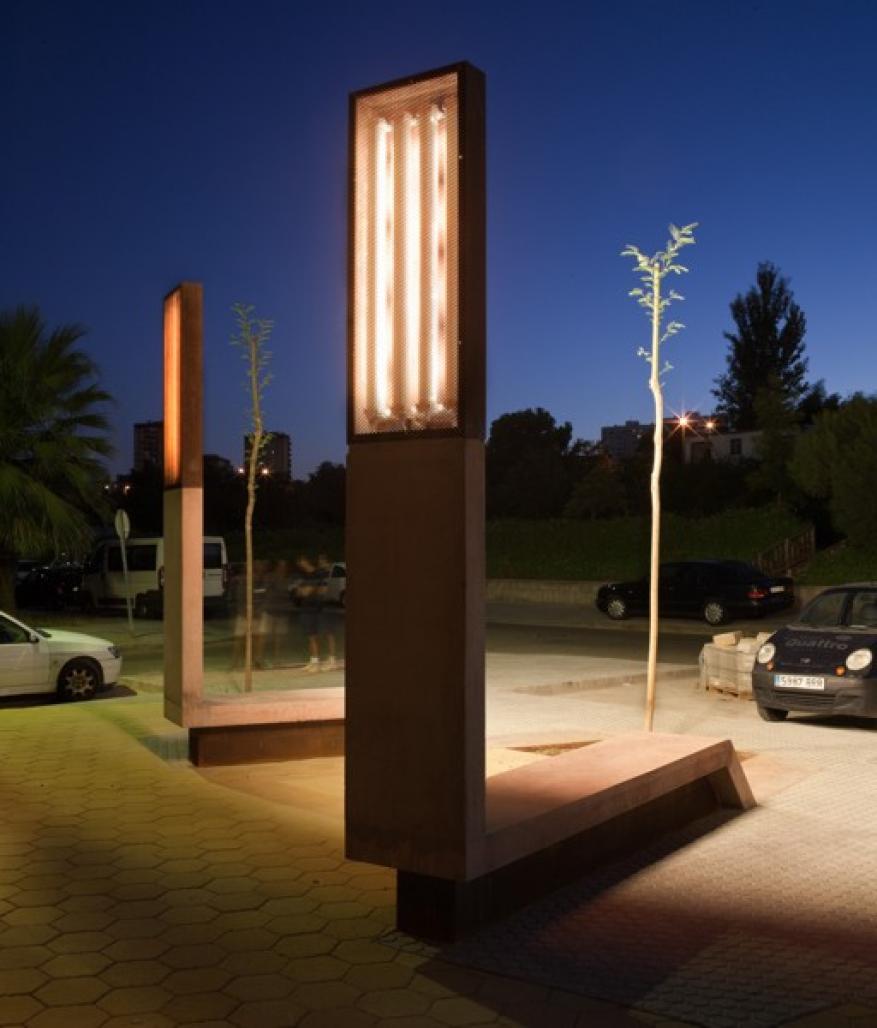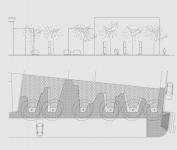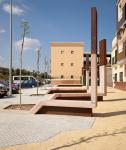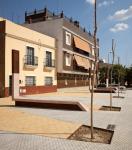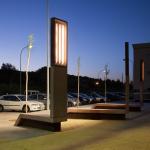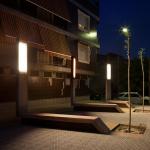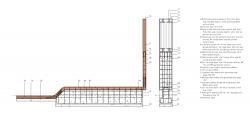The intervention is located in a residual area, product from the regularization contained in the Master Plan, which realization depended on the public intervention. The extension in time of this precarious situation generated spontaneous ways of occupation, in some cases incompatible with each others, such as game area, pets walking and the one which finally reach to prevail, parking area. This situation supposes a conflict with the adjacent houses and, of course, with the transit of people in a walking area. The site area is about 580 m².
The idea is to count on the materials around, and solve the residual elements whit those materials. It is important to incorporate a grove that needs not many cares, as well as endow it with basic equipment that make the use of the space attractive, increasing on the other hand, the parking area. The space is organized starting with the design of an element of urban furniture which contains itself solutions of the required needs: sitting, lighting, vegetation and vehicles limited access. The repeating of this element generates different environments inside the complex.
The pavement expresses explicitly, the vocation of the space to connect with existing pedestrian path. Thus, using the same type of tile that sidewalk, it is proposed a certain kind of contamination, by combining hexagonal tiles hydraulic block 10 cm diameter, gray concrete, with the pavement of the new space, by concrete block hexagonal yellow, 30 cm diameter. The gasket between the two materials is cor-ten steel plate, which are used on the formation of the tree wells.
Certain flexibility for the furniture is needed, so its realization is made with concrete, keeping the characteristics elements: sitting, lighting, and adapting its length and position according the needs. This element has a corten steel box on the top, which contains the lightings.
The orientation of the site area, west, and the location of the park area, makes important to incorporate a tree row with two objectives: to control the solar incidence on the west elevation of the houses because of a low position of the sun in the evening time, and to absorb the solar radiation reflected by the parking area, in order to avoid the increasing of temperature. The species selected is Tipuana tipu, which has a suitable level of adaptation to local climate on the one hand, and on the other, in its flowering period, is shown in shades of ocher, green and yellow colors, that suits with the colors of the urban furniture and pavement.
2009
2010
